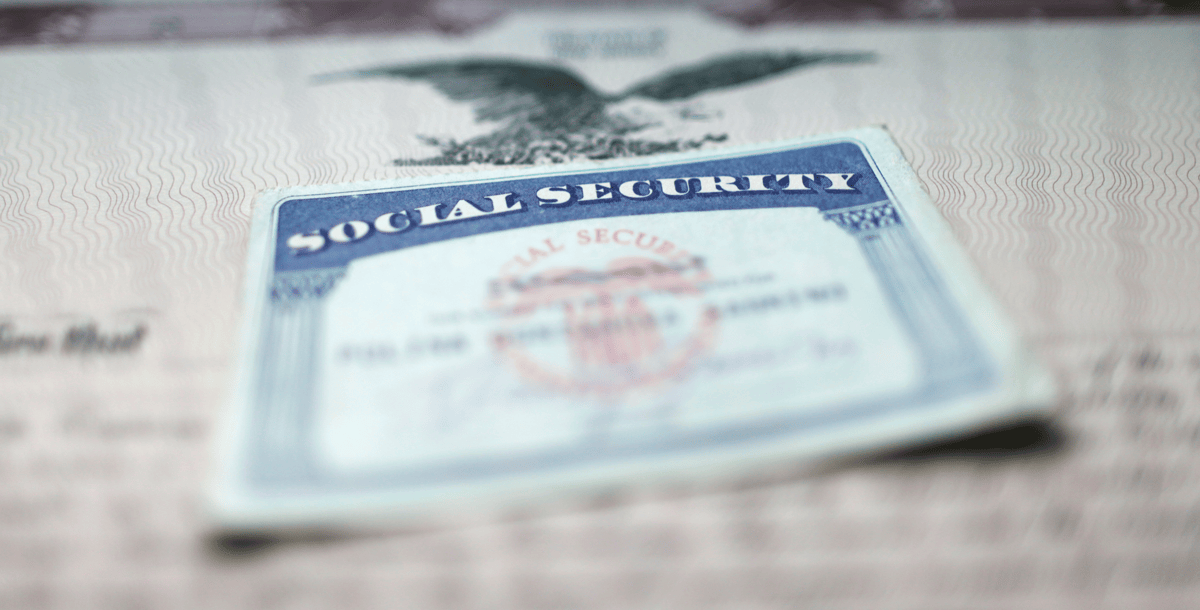Though it might just feel like a string of random numbers given at birth, a Social Security number (SSN) is necessary for some pretty significant steps in life. Applying for loans, credit cards, utilities, job applications, and getting paid – to name a few.
For employers, having accurate Social Security numbers for all of your employees is absolutely critical.
A W-2 form is used to report an employee’s earnings history and that history is tied to their social security number. The W-2 reporting is the basis for determining a person’s future eligibility and benefit amount for Social Security’s retirement, disability, and survivor’s programs.
The American Payroll Association (APA) goes on to say that about 10 percent of W-2 forms have names and SSNs that do not match.
Recently, the SSA began mailing notifications to businesses and third parties who submitted Forms W-2 that contain mismatched names and SSNs. An increasing number of government agencies at the federal, state, and local levels are even rejecting wage and tax returns containing invalid and/or missing SSNs. As you can imagine, that causes quite the barrier to timely and compliant filing.
Luckily, there are plenty of steps you can take and tools you can use to ensure complete accuracy when it comes to your employees’ SSNs.
But first, let’s go back to the beginning. Have you ever wondered who was issued the first SSN? Who came up with these numbers? How do social security numbers get assigned? History lessons are fun, I promise.
Who created Social Security numbers?
The Social Security Board did not have field offices in late 1936, so it contracted with the U.S. Postal Service to distribute and assign the first batch of SSNs. Of the 45,000 local post offices around the country, 1,074 of them were also designated ‘typing centers’ where the cards were prepared.
According to the SSA, the procedure for issuing the first SSNs worked like this: The post offices were to distribute SS-4 application forms to employers. The forms would have employers indicate how many employees they had on staff.
Then, using that data, the post offices supplied a SS-5 form to each employee (which the assignment of an SSN was based). Once the forms were complete, they were returned to the post office where an SSN would be assigned. The SSA’s records indicate that the first SSN was issued mid-November of 1936.
Who received the first official Social Security number?
Master records were created in Baltimore in December of 1936. The first block of 1,000 records were assembled into a large stack. When the man in charge of accounting was ready to process this stack, he pulled off the top record and declared it to be the first official Social Security record. So, it’s not exactly the first SSN, as it’s impossible to identify the first card actually typed in those typing centers, but still a cool fact nonetheless.
That first record? It belonged to John D. Sweeney, Jr. – age 23 at the time – of New Rochelle, New York. Turns out, he was the son of a wealthy factory owner and was working as a shipping clerk for his father when he filled out his application for a Social Security card. The SSA even has his photograph posted online!
What’s the lowest Social Security number?
The SSA explains that SSNs were grouped by the first three digits of the number (area number) and assigned geographically – starting in the northeast and moving across to the northwest. Interestingly, if you look at the distribution pattern, the lowest area numbers are actually assigned to New Hampshire, rather than Maine (even though Maine is the most northeastern state).
Apparently, this was done so that the lowest SSN – 001-01-0001 – could be given to the Social Security Board Chairman who was also the three-time governor of New Hampshire. He declined the number, offered it to someone else who also declined it.
Who designed the Social Security Card?
That little piece of paper that we’ve all come to recognize was designed by Fred Happel of Albany, NY back in 1936. Happel famously designed the ‘Flying Tigers’ logo used by General Chennault’s forces during World War II. He was paid just $60 for his work on the Social Security card.
The SSA has loads of interesting stories regarding SSNs right here on their history page.
Social security number compliance for employers
As an employer, being compliant with the rules of the Social Security Administration is paramount. Below are some recommended ways to handle SSN related issues in your business.
Social Security numbers and identity theft
SSN randomization is the method that the SSA implemented in 2011 that prevents them from running out of SSNs and helps protect against identity theft. Details on randomization can be found in these FAQs.
On a W-2, the SSA uses the SSN, plus the first seven characters of an employee’s last name to post Social Security wages and Social Security tips to his/her earnings record.
As of 2011, the SSA:
- No longer issues SSNs based on geography.
- Issues SSNs beginning with the number 8 which had never been done before.
- Includes all possible SSNs with the number ‘7’ in position 1, rather than reserving SSNs starting with ‘t’ for certain states and groups.
Even with SSN randomization, some aspects of SSN assignment won’t change. A few examples include:
- Social security numbers will never begin with the number 9.
- Social security numbers will not begin with the numbers 666 or 000.
- Social security numbers will not have the number 00 in position 4-5.
- Social security numbers will not have the number 0000 in positions 6-9.
Invalid SSNs.
If you come across any SSNs as shown below, you can rest assured they are invalid. As of 2010, the SSA has never issued:
- The SSN number 123-45-6789.
- SSNs having 000 or 666 as the first three digits.
- SSNs equal to or greater than 773 as the first three digits.
- SSNs having 00 as the fourth and fifth digits.
- SSNs having 0000 as the last four digits.
Don’t get confused with ITIN.
An Individual Taxpayer Identification Number (ITIN) is also a nine-digit number. Issued by the IRS, an ITIN is made for individuals who are required (for U.S. tax purposes) to have a U.S. taxpayer ID number, but who do not have and are not eligible to obtain an SSN.
Generally, the IRS issues an ITIN to nonresident aliens who are not eligible for U.S. employment, but who require an ID number for other tax purposes (ex. the sale of property).
An ITIN cannot be used to report income. If you receive a Form W-4 that lists an SSN that begins with a 9 – please note that it is an ITIN and not eligible to be used when filing W-2 forms.
If you need any help verifying if your new hire is authorized to work in the U.S., the Department of Homeland Security and the SSA have a free system you can use. Called E-Verify, employers can electronically verify new hire information by comparing the data on Form I-9 with federal government databases. Certain federal contractors and subcontractors are required to use this system to verify employees working on federal contracts are eligible to work in the U.S. Note that participation with E-Verify doesn’t mean that you shouldn’t also use the SSNVS.
Reporting correct SSNs.
The IRS suggests the following tips to ensure you’re reporting correct SSNs.
- Ask each employer to show you his/her Social Security card during the hiring process. However, don’t require the card when the employee complete Form I-9.
- Maintain a copy of the Form W-4 your employees provide. Document any subsequent solicitations for a new form if you receive notification from the SSA or IRS that there is a problem with a form.
- Maintain accurate records of all SSNs and employee names in all payroll records.
- Remind employees to report any name changes due to marriage, divorce, etc. to the SSA first and then to you (the employer). These changes can be made using Form SS-5 or other electronic SSN card application).
- Validate the SSN on the Form W-4 using the SSA’s SSN Verification Service. Referred to as the *SSNVS, this free digital system allows an employer to easily identify potential discrepancies to avoid penalties. Visit the SSNVS by clicking here. When you use this resource, you’ll be asked to provide the following information about yourself and your company: name, SSN, date of birth, type of employer EIN, company name, company address, company phone number, email address.
- Have your employees verify the accuracy of their names and SSNs when they receive their Forms W-2. Review it for typos or other possible glitches that could’ve occurred in the system.
What to do if a Social Security number is wrong on a W-2.
Mistakes do happen. We can all understand that. Luckily, you can correct a W-2 before it’s too late.
If you reported an employee’s name or SSN correctly on a previous form, but the name or SSN is incorrect this year, complete Form W-2c through box ‘i’. Form W-2c cannot be used to add information if the error is a missing employee name or SSN. In that case, you must contact the SSA directly.
If you sent the incorrect Form W-2 to the employee (but you haven’t sent to the SSA), simply check Void on Copy A. Make a new Form W-2 with the correct information and write CORRECTED on the employee copies. The version you send to the SSA should not have CORRECTED written on it, however.
You’ll want to check out the IRS’ Publication 15 (Circular E, Employer’s Tax Guide) for thorough instructions for recording employees’ names and SSNs.
Penalties for incorrect filing.
According to the IRS, if you fail to file a correct Form W-2 by the due date and cannot show reasonable cause – you may be subject to a penalty.
Here’s when the penalty would apply to you:
- Failure to file timely.
- Failure to include all information required on a Form W-2.
- Including incorrect information on Form W-2.
- Filing on paper forms when required to e-file.
- Reporting an incorrect TIN (taxpayer identification number, which would include an SSN).
- Failure to report a TIN.
- Failure to file paper Forms W-2 that are machine readable.
Stay compliant this year and beyond.
Before year-end, be sure to update your payroll records. Ask employees to verify their name and SSN before you close your books (or send a report to your payroll company).
When you work with a payroll provider (like us) staying compliant with taxes and payroll becomes a lot easier. That being said, it’s still up to you to document your employee information correctly.


